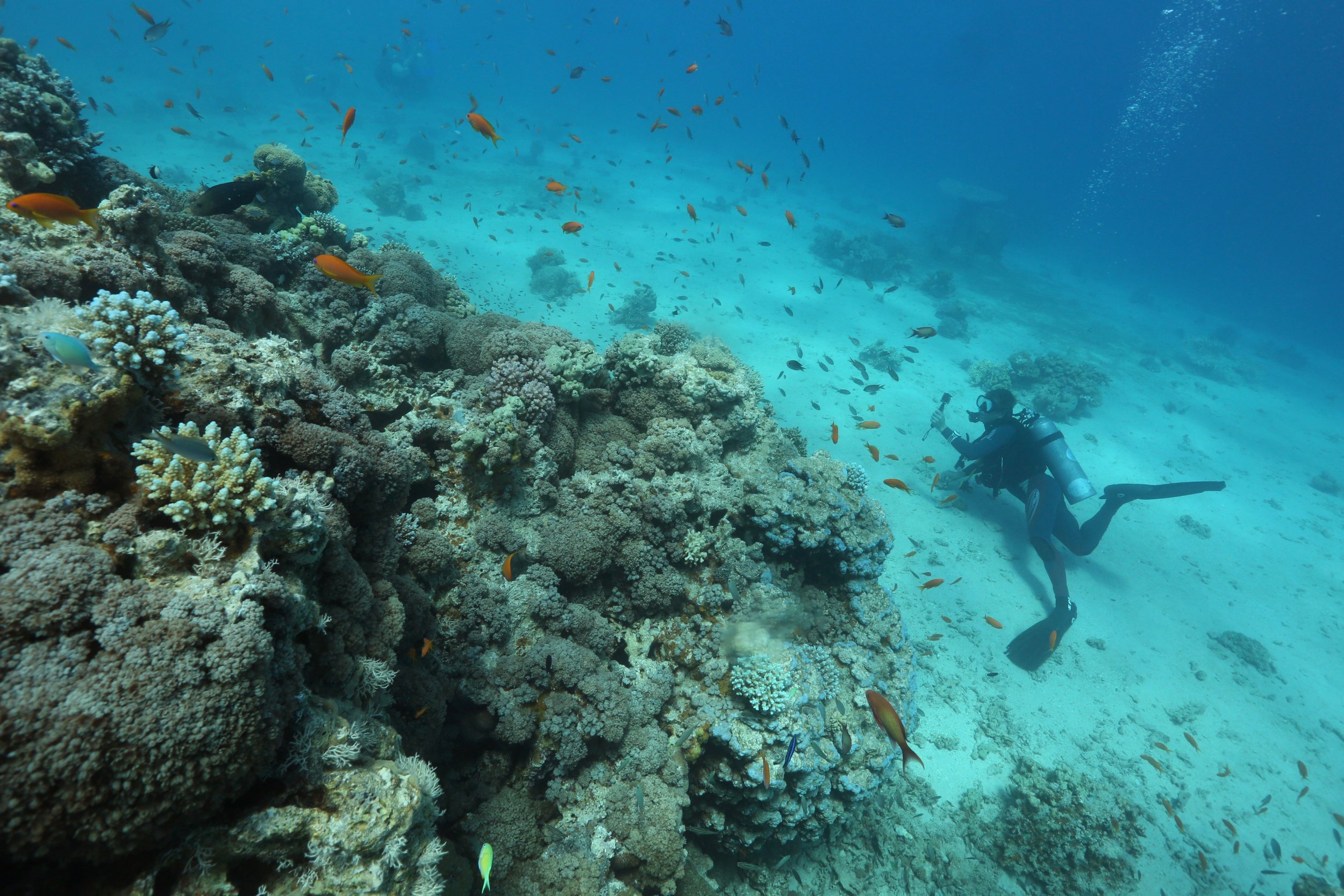
Last night, David Attenborough's Blue Planet II showed a host of spectacular ocean creatures from the coral reefs, but it was one frightening carnivorous worm that really stole the show. Officially known as Eunice aphroditois, the BBC confirmed that the worm's colloquial name was indeed inspired by Lorena Bobbit, who infamously maimed her husband in 1993. The worm reminded viewers that one doesn't need to leave Earth to see a true monster.
The Bobbit worm is a blind, brainless ocean worm with an appearance not even a mother could love. According to The Smithsonian, the colorful worm, who resides in coral reefs, has sharp, bristly, harpoon-like teeth that act as hooks to pierce and immobilize unsuspecting fish. The ambush hunter nestles deep in the ocean sand with only its head exposed. There, it relies on either its antennae or shadows from lingering fish to let it know when prey is near. Once the prey is captured, the worm injects it with a venom that helps kill it and make it easier to digest, Wired reported. Although most of the worm is hidden underneath the sand, the creature can grow up to 10 feet long and prefers to hunt at night.
Say hello to the bobbit – a metre-long worm with jaws as sharp as daggers#BluePlanet2 pic.twitter.com/Oj8oYLdQSM
— BBC Earth (@BBCEarth) November 12, 2017
Related: Video: Nine-Pound Crab Breaks Seabird's Wings Before Eating It Alive
Though the Bobbit worm took up just a small fraction of the documentary, the reaction to it was strong, with the worm briefly rising to fame on Twitter Monday morning.
The worm's name is just as foreboding as its appearance and habits. In a tweet this morning, BBC confirmed that the worm was indeed named after "THAT Bobbitt," meaning Lorena Bobbit, who cut off her husband's penis with a knife while he slept in 1993. Lorena took the penis, drove away in her car and threw the severed body part into a nearby field. Eventually the penis was discovered and surgeons were able to reattach it.
This meter-long bobbit worm lives in a mucus-lined burrow in the seabed in Lembai, Indonesia #BluePlanet2 continues tomorrow 8pm GMT pic.twitter.com/Sk11Lv1bTq
— BBC Earth (@BBCEarth) November 11, 2017
Related: Prehistoric, Dinosaur-Era Shark With Insane Teeth Found Swimming Off Coast of Portugal
The Bobbit worms, along with other fascinating ocean creatures, were part of the debut of Blue Planet II, the long-awaited sequel to the beloved 2001 BBC series Blue Planet. The series first premiered on October 11 at Bristol's Cinema de Lux in England and was broadcast to the public on BBC One on October 29. In addition to the Bobbit worm, other memorable creatures shown on the show included a "hypnotizing cuttlefish" that employs unbelievable disguises in order to catch prey, and the giant trevally, a bird-eating fish that launches itself out of the water in order to feast on seabirds.
Future episodes will showcase even more of the strange yet fascinating creatures that call our planet's oceans home.
Yes, the Bobbit worm is named after THAT Bobbit #BluePlanet2
— BBC Earth (@BBCEarth) November 12, 2017
Uncommon Knowledge
Newsweek is committed to challenging conventional wisdom and finding connections in the search for common ground.
Newsweek is committed to challenging conventional wisdom and finding connections in the search for common ground.
About the writer
To read how Newsweek uses AI as a newsroom tool, Click here.








